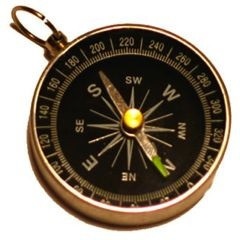The big interview is approaching… How did you land it? Someone may have referred you. You could have submitted a resume to an online job site. Or, you may have been tapped on the shoulder and asked to go for the big promotion in another division. No matter how it began, you are there because — on paper — you are qualified. You have the experiences and achievements that match the role. Now, you have to ensure the hiring manager that you can achieve results again and that you are a cultural fit. (Yes, that all important organizational fit issue.) Let’s talk about what that means.
Cultural Fit
I participate in hiring panels often, some with formal scorecards and questions, and some less formal. No matter the format, when it comes time to debrief the view point of each interviewer, the topic of cultural fit always comes up. I find it often trumps all other things learned in the interview. This should not surprise anyone; we have all worked with someone who was not a cultural fit.
You know the story: that person was impressive on paper and during the one-on-one interviewing stage but their style, approach and behavior on the job was simply inconsistent with the values and expectations of your organization? Their modus operandi was foreign to everyone. The hire was not a good cultural fit.
To better appreciate the role of culture fit in the selection process, it is useful to first explore the broader concept of fit and the reasons why cultural fit is particularly important in today’s business environment. Fit is typically defined in two distinct ways: job fit and organization fit.
Bruce Watt managing director, DDI a top HR consulting firm describes it like this. “Job fit refers to the degree to which the candidate’s skills and experience are relevant to the job and the degree to which the candidate finds the roles activities and responsibilities satisfying. Organizational fit refers to the candidate’s compatibility with the organization’s values and mode of operation. While organizational fit covers a range of organizational attributes the most common and frequently cited element centers on the congruence between individual and organizational values. This is often referred to as culture fit.”
Companies are using a number of methods to uncover values and ensure cultural fit. These include behavioral interview questions (specifically targeting values), panel interviews and reference checking. Some organizations are also using quite novel approaches: onsite visits, trial work periods and even pre-employment dinners are being used to assess someone’s suitability for the organization’s culture.
So what is the answer? How do you prepare in such a way to ensure everyone in the interview process sees you as a cultural fit and believes your moral compass aligns with everyone you will work with? It can be stated this simply: you need to know yourself and be able to articulate what you stand for.
Stay tuned for specific tips and sample interview replies!
Keep up-to-date with Fast Track Tools by subscribing to our blog, via Twitter @fasttracktools and join our Facebook community!
image by Katrina Snaps used by permission

Pingback: How to prepare for “cultural fit” questions, Part 2 | Fast Track Tools by Ken Revenaugh